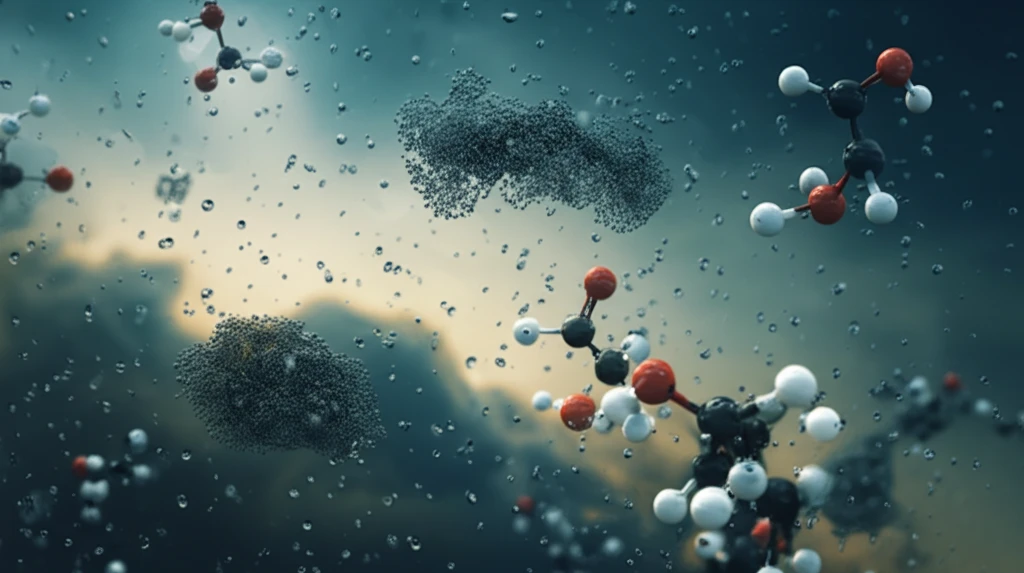
Can Kitchen Chemistry Save Our Skies? The Unexpected Role of Glyoxal in Air Pollution
"New research reveals how a common compound, glyoxal, impacts the catalytic oxidation of sulfur dioxide, potentially altering air quality."
Air pollution is a complex challenge with impacts that span from our immediate health to global climate patterns. Among the many compounds contributing to this issue, sulfur dioxide (SO2) plays a significant role. In the atmosphere, SO2 transforms into sulfate, a key component of particulate matter that affects air quality, cloud formation, and even the acidity of rain.
The oxidation of sulfur dioxide in the aqueous phase—think cloud droplets and aerosols—is a critical area of study for environmental scientists. This process is often sped up, or catalyzed, by transition metals like iron, which are commonly found in atmospheric particles. However, the presence of organic compounds can further complicate this already intricate scenario.
Now, new research is shedding light on how one particular organic compound, glyoxal, influences this catalytic oxidation. Glyoxal, a simple dicarbonyl compound, is prevalent in the atmosphere, arising from both natural and human-caused sources. Understanding its role could be a game-changer in our fight against air pollution.
The Science Behind Glyoxal's Impact on Sulfur Dioxide Oxidation

A recent study published in ACS Earth and Space Chemistry delves into the interactions between glyoxal and sulfur dioxide in acidic, aqueous environments. The researchers, led by Vicki H. Grassian, focused on how glyoxal affects the catalytic oxidation of S(IV)—sulfur dioxide in its dissolved form—when catalyzed by iron ions and iron oxide particles.
- Trapping of Sulfate Radicals: Glyoxal appears to react with sulfate radicals (SO4-), key intermediates in the oxidation process, effectively reducing their concentration.
- Formation of Glyoxal-S(IV) Adducts: Glyoxal combines with S(IV) to form adducts, which are less reactive and slow down the overall oxidation process.
Why This Matters: Implications for Our Atmosphere
These findings have significant implications for our understanding of atmospheric chemistry and air quality. Glyoxal, as a ubiquitous organic compound, can influence the rate at which sulfur dioxide is converted to sulfate, a major component of atmospheric aerosols. This, in turn, affects cloud formation, precipitation patterns, and the overall radiative balance of the Earth.
